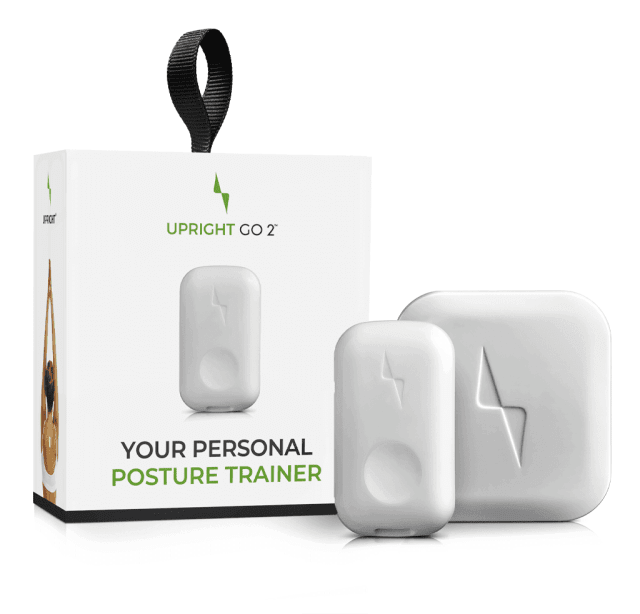How to Stop Slouching
Max Frenkel

What’s making you slouch
You might find yourself slouching throughout your day and not even realize how you got there. Then, you might wonder how you can fix a habit you didn’t realize was forming. With more advances in technology, we are seeing good posture retire; some of the little devices that connect us to the rest of the world, are disconnecting us from our healthiest posture. Slumping over laptops, tablets and cell phones is becoming more and more prevalent in every part of our society. From playing phone games in the waiting room of the doctor’s office, to a Netflix binge on a laptop in bed, to a video chat with family on a tablet, the capabilities of smart devices fit into every part of the day, and can distract from healthy posture. Because of screen size, people generally hunch over their devices to get a better view, or slump back for “comfortable” lounging. And with the constant entertainment, it can be easy to lose track of how long you’ve been sitting in a bad position.
Another common slouching activity is driving. From hyper-focus on the road to a seat that isn’t positioned right, it can be easy to pinch the shoulders up into the neck and hunch over the steering wheel. This is especially common in shorter drivers, who are usually sitting closer to the steering wheel. While poor posture on a quick trip to the store may not seem like a big deal, the way you sit in your car for quick trips will teach your body the position to settle into for long trips. Poor posture over multiple trips to the store and long work commutes can start to affect well-being.
Why does posture matter
Why put so much focus on good posture? Why not slouch when relaxing after a long day? Posture affects multiple facets of overall health, for better or worse. Along with the general younger and slimmer appearance good posture can give, it actually helps prevent back, neck, and shoulder pain. When your body isn’t aligned correctly extra strain is created in areas that aren’t equipped to support your weight. Imagine holding a bowling ball directly in front of you with one arm, how long could your arm stay strong before the weight of the bowling ball starts to wear on you? A hunched over head can put stress on your neck in a similar way, leading to tight, stiff muscles and chronic pain.
Posture affects more than visible, physical health. Upright posture allows for better oxygen flow into and through your body, which improves the function of every organ, including your brain. Upright posture can give an emotional boost and support positive mental health, while poor posture is linked to poor confidence and increased depression. Simply standing or sitting up straight could be the best gift to give your body.
Now that you know where you might be slouching, and why slouching can be harmful, how do you fix bad habits? Because the habit of slouching creeps up at different times and in different ways, there is not one simple solution. Fixing your posture comes from a combination of fixing your environment, strengthening and relieving your muscles, and staying disciplined in your efforts.
How to stop slouching

If you have poor posture because of an old desk chair or uncomfortable car seat, sitting up straight won’t fix the underlying issue, and you won’t see lasting results. To improve posture while driving, insert a small pillow between your lower back and the back of the chair. This will give added back support and a gentle reminder to sit up straight. Adjust your workstation to provide optimal posture support, and talk with your manager or HR department if you need new equipment. Read more about how to improve posture at work. Avoid unnecessary day-to-day stress on your body by opting for purses or backpacks that distribute their weight evenly across your shoulders or body. A heavy work bag that is always carried on the same shoulder can contribute to misalignment and pain. You can also avoid hunching over devices by not using your lap as a desk for your laptop, and bringing your phone to eye level for games or text messaging. While you may feel silly at first, your body will thank you with improved health.
Fixing your environment is only the first step, next you’ll need to stretch and strengthen your muscles. Maintaining good posture may feel exhausting at first if your body is used to slumping and slouching. You’ll need to train your muscles to hold new positions and support your body weight in new ways. Don’t worry, your body will adjust quickly as good posture is the way your body is designed to naturally support itself. Create new posture habits with exercises that strengthen back and shoulder muscles, and help break old habits with stretches that lift tightness.
A great exercise to begin your good posture journey is wall angels. Stand with your back pressed up against a flat wall. Plant your feet slightly wider than shoulder width. Your head, shoulder blades, and buttocks should all be touching the wall, but the back of your heels should be a few inches out from the wall. Bring your arms out to your side and bend your elbows at a 90 degree angle. Your elbows and the back of your hands should be laying on the wall. Slowly lift your arms towards the ceiling, above your head in a wide “V” shape, maintaining contact with the wall, then bring your arms back down to your sides in the 90 degree angle position. While performing this exercise, focus on keeping your shoulders rolled back and down. Repeat this exercise twice, doing 10 reps each time.
Strengthening your abdominal muscles is a great way to support your back and upright posture. The superman exercise in particular can promote strengthening both areas, together. To perform the superman start by laying flat on the ground on your stomach. Place your arms stretched out in front of you, above your head. Lift your arms, shoulders, and chest off the ground at the same time you lift your feet, shins and thighs off the ground. Your body should create a slight bowl shape from your fingers to your toes. Hold this position for 10 seconds, relax for 10 seconds, and repeat 5 times. Then, repeat the exercise, but this time instead of holding your arms straight forward above your head, hold your arms straight to your side, creating a “T” or “Superman” position. Once again, focus on keeping your shoulders rolled back and down through your repetitions.
Complete both exercises at least once daily. Implementing the exercises multiple times throughout the day is encouraged. Give a way for your muscles to relax by adding in stretches that also promote good posture.
Begin with the cobra position. After you have finished your superman exercise, continue to lay on the floor on your stomach. Lift your chest off the ground again, but this time, support yourself by placing your hands directly below your chest and pushing through your arms to hold yourself up. (This stretch may look like the classical depiction of a mermaid perched on a rock.) Roll your shoulders down and back and imagine an invisible thread pulling your chest toward the corner where the wall meets the ceiling. Remember, this stretch is for your back and should not cause any pain.
Stretch your shoulders and upper back while strengthening correct posture muscles with the shoulder pinch. Roll your shoulders back and picture an imaginary string running down your back between your shoulder blades. Push your shoulder blades back and together to squeeze this imaginary string while you hold your head straight up, looking forward. Hold the shoulder blade pinch for 10 seconds, relax for 10 seconds, and repeat 5 times. Perform this pinch a few times throughout the day for best results.
While using the wall, move to the corner of the room for another shoulder stretch. Begin by facing the corner and standing about a foot away. Bring your arms out to your sides at shoulder height and bend at the elbow to create two 90 degree angles. Place one hand and respective elbow on each wall and while standing straight lean towards the corner. You should not need to learn far to feel the stretch in your upper back. Hold this stretch for 15 seconds and repeat throughout the day.
Stretch your neck by leaning your head sideways and using your hand to gently pull your head closer to your shoulder. Remember you should feel the stretch working, but should not feel any sharp pain or intense strain. Using the same amount of pull, bring your chin to your chest and tug your head slightly toward your body with your hand. These stretches will release tension built up from holding your head in incorrect positions, and can easily be done at your work desk.
Stretching affects posture not only from how well you stretch, but how often. Each morning when rising from bed you should stretch your back to ease any stress built up from sleeping positions. Starting your day with a fresh body will boost your ability to maintain straight posture. Throughout the day you should take a few minutes to walk around and do short, simple stretches anytime you are sitting stationary for more than 30 minutes. A quick stretch can also give your brain room to take a mental break before refocusing on the tasks at hand.
Along with regular stretching, routine relaxation techniques can aid the body in releasing tension and improving posture. Yoga classes, physical therapy, chiropractic massages, and mindfulness and meditation can all be performed to supplement your posture training. Experiment with which methods work best for you, and how often you are able to participate.
Armed with a new environment, and new stretches and exercises, it is time to get disciplined. Although good posture is innate to your body, it will take effort to overcome bad habits. Continue to practice your stretches and exercises, improve your environment, and stay aware of your posture throughout your day. It may be helpful to set reminders on your phone or leave a sticky note on your computer reminding you to ‘sit up straight.’ The all new UPRIGHT GO 2™ can serve as as easy reminder, as the discreet device on your back will gently buzz when you start to slouch. Learn more about how the Upright Go can help you. Staying disciplined will not only help you improve your posture, but maintain it. As you persist in your efforts to stop slouching, you will see the benefits of good posture unfold in your life.
You Might also Like
Search
Sign up to our newsletter
Follow Us On
Popular
Revisit the GO 2/S Device Setup
How to get started
Finding your upright position
How to find your target upright posture
Calibration
Check out the UPRIGHT GO 2


